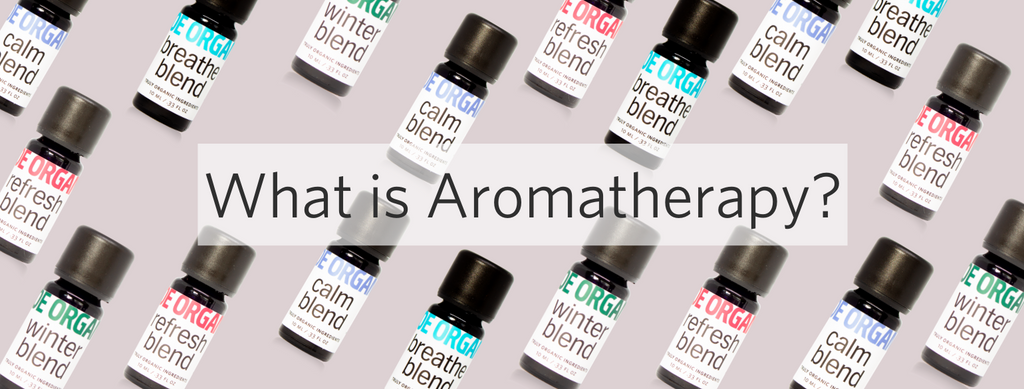What is Aromatherapy?

Aromatherapy is often referred to as "a blend of science and art". I have been studying aromatherapy for more than 10 years, and I love this description. I wholeheartedly believe in the power of plants and find so much joy in getting creative with blends and scents. Just like art, aromatherapy is very personal.
Essential oils, the pure volatile portion of aromatic plants, have so many uses and benefits. Although they have been used for thousands of years, they have become increasingly popular, especially with the explosion of MLM's like Young Living and DoTerra. But with popularity, also come confusion and contradictory information. As with anything you absorb or put on your skin, do some research and use care.
The National Association for Holistic Aromatherapy (NAHA) defines aromatherapy as "the therapeutic application or the medicinal use of aromatic substances (essential oils) for holistic healing."
How does it work?
Inhaling essential oils stimulates the olfactory system, which is the part of the brain responsible for smell. Molecules enter the nose or mouth, pass to the lungs and then other parts of the body. Molecules that reach the brain affect the limbic system, which is involved in our behavior, memories and emotional responses. You know how a certain scent can instantly take you back to a specific time and place? That's because our memories and scent are powerfully connected.
Aromatherapy can act on the central nervous system, which is why it can benefit those with clinical manifestations of a dysfunctional limbic system. Those with anxiety disorder, for example, can benefit from using essential oils that are rich in chemical components linalol, linalyl acetate and d-limonene. Much research supports these constituents can calm the nervous system. Lavender, contains a high concentration of linalol, which is no wonder, since it is one of the most popular oils for relaxation.
Topical application is another form of aromatherapy, where essential oils are diluted in a carrier and are absorbed through the skin. For a product like our Breathe Balm, one of the recommended applications is to the soles of feet, where pores are larger and absorption is quicker.
We do not recommend taking essential oils orally or ingesting them, unless under the instruction of a professional health care provider. It is not necessary and can be dangerous. Always keep your essential oils out of reach of children.
Using essential oils for aromatherapy can be really fun! It doesn't have to be complicated, in fact, our philosophy has always been to keep things simple and functional. Our multi-purpose blends cover a range of benefits and below are some ways you can incorporate them into your routine:
1. Diffuse! Add the appropriate number of drops of essential oil to water, depending on the size of your diffuser.
2. Add 5 drops of essential oil to a cup of Epsom salt, blend well and pour into a hot bath.
3. Add 5 drops of essential oil to 1 oz of carrier oil (we love sunflower or fractionated coconut) and use as a body or massage oil.
4. Add a few drops of essential oil to the floor during a hot shower and breathe in the vapor.
It is important to know that each essential oil has its own chemical make up and can have a very different purpose and affect. Two people can react to the same oil differently as well. Dilute essential oils in a carrier before applying to skin and do a patch test. When diffusing essential oils be aware of children and pets that may be more sensitive to them.
Have questions about our essential oils or uses? Send us an email!


Leave a comment